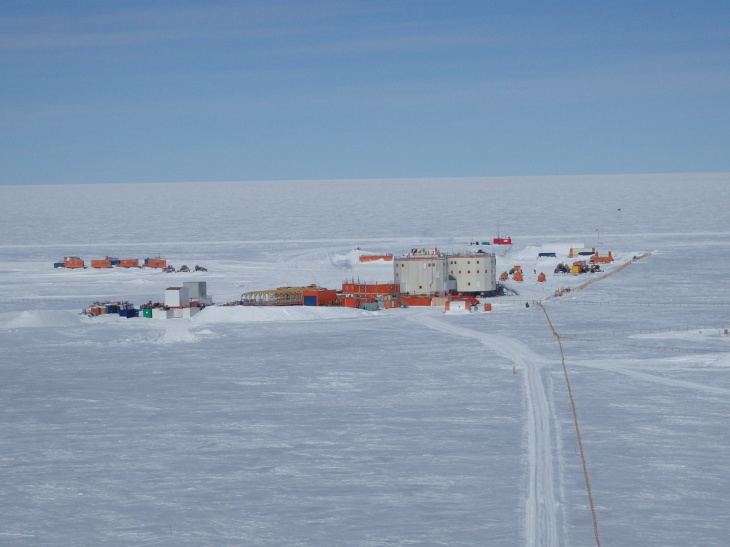Migration of contaminants to the Antarctic inland

Sampling snow at Dome C in Antarctic summer of 2016. Photo: [A. Thollot and Olivier Magand/Institut des Géosciences de l’Environnement (IGE), FRANCE]
Man leaves his footprint in the snow: Man-made chemicals can be detected in almost all regions of the world, including the polar regions. Now an international team of scientists has discovered organic pollutants for the first time not only in the Antarctic coastal region, but also in the "eternal ice and snow" in the Antarctic inland.
The findings add to the growing evidence that organophosphate ester flame-retardants (OPEs), perfluoroalkylated substances (PFASs) and polycyclic aromatic hydrocarbons (PAHs) can undergo long-range transport and become a subject of concern for Antarctic ecosystems. Dr. Zhiyong Xie, scientist at the Helmholtz-Zentrum Geesthacht, examined snow samples for organic pollutants together with colleagues from the French "Institut des Géosciences de l'Environnement (IGE)".
GenX was determined for the first time

The Antarctic research station "Dome Concordia", located about 1,000 kilometers from the coast, was the starting point for sampling the Antarctic snow. As for the pristine Antarctica, organic contaminants from long-range transport have been observed near coastal regions. By analyzing the levels and component characteristics of OPEs, PFASs and PAHs in the snow “clean area” at Concordia station, the researchers found that these organic contaminants can be transported to the Antarctic inland. Relatively high concentrations of chlorinated OPEs, e.g. TCEP and TCPP were detected. PFOA was the dominant compound of PFASs, followed by current-used short-chain PFAS, e.g. perfluoro-n-hexanoic acid (PFHxA), perfluoro-n-heptanoic acid (PFHpA) and perfluoro-n-pentanoic acid (PFPeA).
Surprisingly, GenX (2-(heptafluoropropoxy)propanoic acid, HFPO-DA) was determined in the Antarctic for the first time. Just recently, coastal researchers of the HZG have also detected GenX in the Arctic for the first time.
Long distance transport of chemicals

Surface snow sample dedicated to the analysis of emerging organic contaminants. [ © Olivier Magand/Institut des Géosciences de l’Environnement (IGE), FRANCE]
"We have observed significant correlations between HFPO-DA and the short-chain PFASs," said Dr. Zhiyong Xie. "This indicates that they have similar emission sources and a far-reaching transport potential. HFPO-DA will follow the example of PFOA and become a new problem for the polar environment".
Concordia station

Overview of the Franco-Italian Concordia station. © Olivier Magand/Institut des Géosciences de l’Environnement (IGE), FRANCE
Both global distillation and cold trapping may play significant roles to convey these chemicals from the Southern Ocean to the Antarctic inland. Scavenging and remobilization of organic contaminants by snow deposition and melting under the global climate change may enhance the essential impact on driving the exchange processes between environmental media. Moreover, the human activities, e.g. tourism and shipping have obvious impacts on the local environment.
Consequently, research programs will be initiated to explore the geochemical processes among different environmental matrices (Air, water and snow) and to elucidate the long-range transport and redistribution of the legacy and emerging organic contaminants from the coast to Antarctic inland.
The publication:
- Occurrence of legacy and emerging organic contaminants in snow at Dome C in the Antarctic. Zhiyong Xie*, Zhen Wang, Olivier Magand, Alban Thollot, Ralf Ebinghaus, Wenying Mi, Aurelien Dommergue (2020), Science of the Total Environment, 741, 140200. DOI: 10.1016/j.scitotenv.2020.140200
Contact:
Helmholtz-Zentrum Geesthacht
